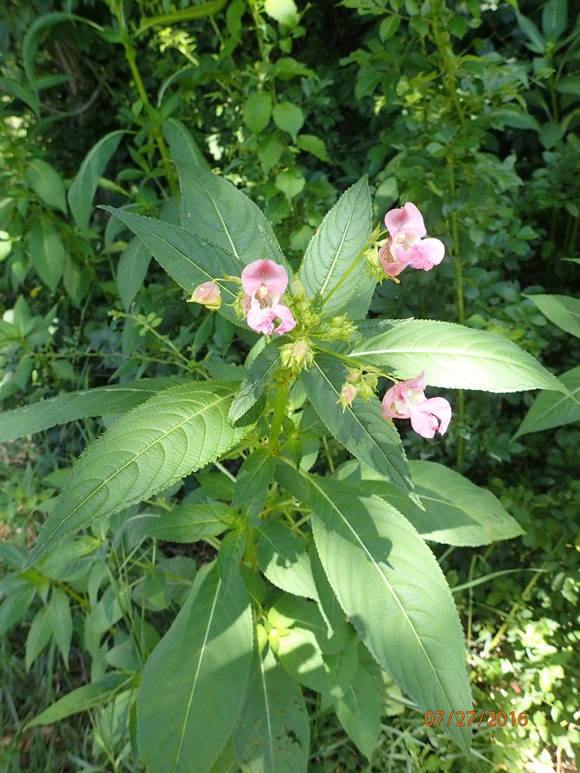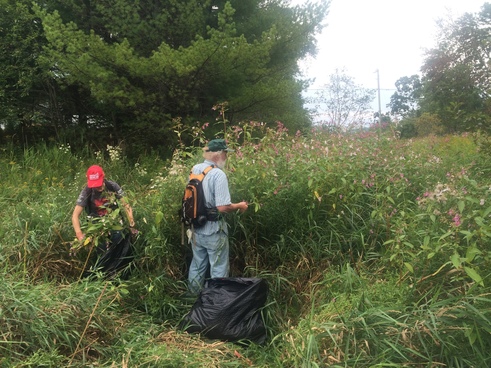Invasive plant search teams looking for farm and woodland properties in Midcoast counties
Invasive plants are becoming more common in Maine. Look near highway exits, ditch banks, and construction sites -- places where there is soil disturbance -- and you are likely to spot them.
Unfortunately, seeds and viable fragments from these plants are finding their way into more pristine habitats as well as woodlots and farmland. If you are an agricultural producer, chances are you want to avoid the drain on productivity and resources that unwanted plant invaders can inflict on your land.
Pastures and crop fields can be overtaken by aggressive invaders like multiflora rose and shrubby honeysuckle in just a few years. Japanese barberry and buckthorn can wreak havoc in woodlots, hampering native tree regeneration and creating habitat for pests like ticks. Sugarbush stands and blueberry barrens, natural plant communities that are important sources of income for Maine landowners, are also vulnerable to invasion.
Not sure what invasive plants might be making themselves at home in your fields, woodlots, wetlands or barrens? Experts from the Department of Agriculture, Conservation and Forestry’s Maine Natural Areas Program (DACF-MNAP) and Maine’s Soil and Water Conservation Districts (SWCD) want to help. Funded by a Conservation Innovation Grant (CIG) from the U.S. Department of Agriculture-Natural Resources Conservation Service (USDA-NRCS), this technical team surveyed 20 farm properties in 2016, the first year of a three-year project, and will survey additional farms and woodlands during the 2017 field season. Property owners who participated in 2016 were provided with reports that included maps and recommendations about how to manage the invasive plant species found on their land. DACF-MNAP and SWCD staff showed participants how to identify target species as well as how to use iMapInvasives, an online mapping program that tracks invasive species. Some of the properties surveyed were selected for targeted invasive species removals conducted by members of the team.
“In addition to large infestations of some of the more common invasives like shrubby honeysuckle and Japanese barberry, we also detected smaller populations of less widespread invasive plants like Himalayan balsam and garlic mustard on a couple of farms,” said Nancy Olmstead, invasive plant biologist with DACF-MNAP. “And it’s encouraging to know that these populations can be treated by hand at this point in time.”
This approach, called Early Detection and Rapid Response, is a major goal of the project, since early action is the most economical and effective means of control. By controlling invasive plants on agricultural and woodland parcels, landowners are helping to prevent these plants from moving into Maine’s parks, recreational areas, and conservation lands.
NRCS District Conservationist for Kennebec and Lincoln counties Peter Abello is excited that the project is providing producers with helpful documentation they can use to apply for financial support for invasive plant management through the NRCS Environmental Quality Incentive Program (EQIP), a competitive cost-share program funded by the 2014 Farm Bill.
“Through EQIP, we can help producers who are looking to control invasive plants on their farm or woodlot,” said Abello. “Those who have received funding have been amazed by the improvement they see in pastures, fields and woodlands when they get rid of some of these species, like multiflora rose.”
Producers who are interested in learning more about the invasive species on their properties, including receiving a report with maps and management recommendations, can do so by participating in the project this coming summer. The only requirements are that you must be a producer in Kennebec, Knox or Lincoln counties, and be eligible for the USDA-NRCS Environmental Quality Incentives Program (EQIP). To request a site visit or get more information, contact your local SWCD: Dale Finseth at Kennebec County SWCD (207) 622-7847 x3; dale@kcswcd.org or Hildy Ellis at Knox-Lincoln SWCD (207) 596-2040; hildy@knox-lincoln.org.
Event Date
Address
United States




























